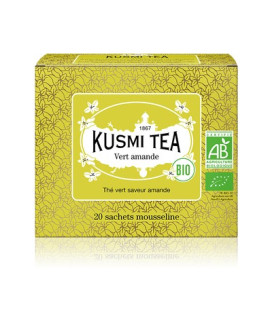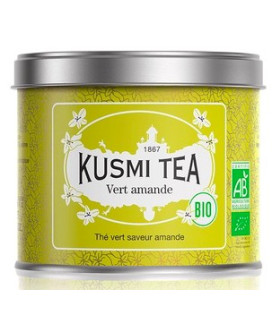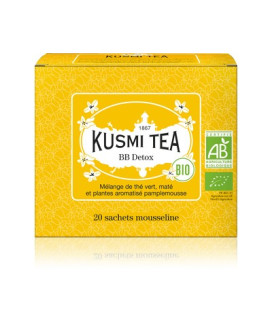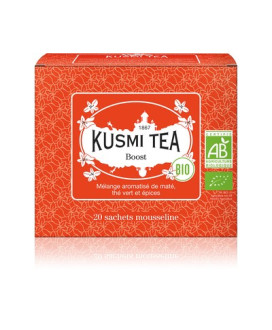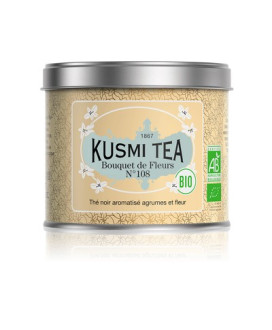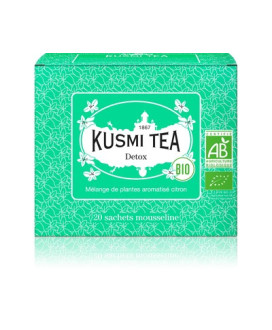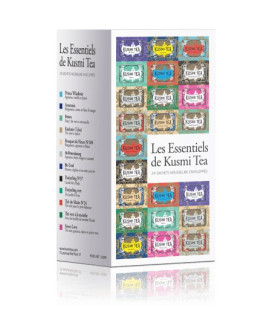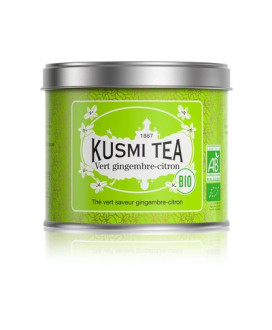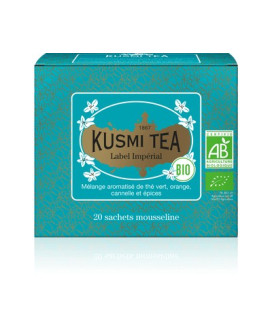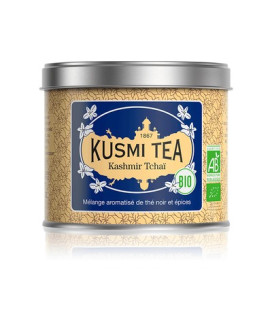-
MenuBack
-

-
WINES
- WINES
-
-
-
International red wines
-
-
International White wines
-
-
-
Winery
- ABBAZIA DI NOVACELLA
- AGRICOLA I FORESTERI
- ALAIN MERCIER
- ALBERT PIC
- ALLEGRINI
- ALTA VISTA
- ALTEMASI - CAVIT
- ANDREA ARICI
- ANTINORI
- ANTINORI - ALDOBRANDESCA
- ANTINORI - HARAS DE PIRQUE
- ANTINORI - LA BRACCESCA
- ANTINORI - MONTENISA
- ANTINORI - PRUNOTTO
- ANTINORI - SANTA CRISTINA
- ANTINORI - TORMARESCA
- ANTINORI - TUZKO BIRTOK
- ARGIANO
- ARGIOLAS
- ARIOLA
- ARNALDO CAPRAI
- ASTORIA
- AZ. AGR. CAVALIERI
- AZ. AGR. MARINA PALUSCI
- AZ. AGRICOLA TABARRINI GIAMPAOLO
- BAKARI
- BALTER
- BARON DE LADOUCETTE
- BASTIANICH
- BELLAVISTA
- BERLUCCHI
- BERSI SERLINI
- BIBI GRAETZ
- BILLECART-SALMON
- BISOL
- BOLLINGER
- BONNET GILMERT
- BORTOLOMIOL
- BRAIDA
- BRESSAN
- BRIGANDAT
- BRUNO GIACOSA
- CÀ DEI FRATI
- CA' DEL BOSCO
- CA' DEL VENT
- CA' LOJERA
- CALONGA
- CAMILUCCI
- CANTELE
- CANTINA DEL VERMENTINO
- CANTINE CECI
- CANTINE COPPO
- CASA CATERINA
- CASALE DEL GIGLIO
- CASANOVA DI NERI
- CASCINA DEL COLLE
- CASCINA DI CHICCO
- CASEMATTE
- CASTELLO DI AMA
- CASTELLO DI COLLEMASSARI
- CASTELLUCCIO
- CATTIER
- CAVALLERI
- CERETTO
- CHATEAU CANTENAC BROWN
- CHATEAU D'ESCLANS
- CHÂTEAU D'YQUEM
- CHATEAU DE BLIGNY
- CHATEAU DE RICAUD
- CHÂTEAU GRAVAS
- CHÂTEAU JALOUSIE BEAULIEU
- CHÂTEAU LAFLEUR
- CHÂTEAU LATOUR
- CHÂTEAU LE BERGEY
- CHÂTEAU LES JUSTICES
- CHÂTEAU MAJUREAU SERCILLAN
- CHÂTEAU MARGAUX
- CHÂTEAU PETRUS
- CHIARA CONDELLO
- CIACCI PICCOLOMINI D'ARAGONA
- CIU' CIU'
- CLETO CHIARLI
- CLOS DE L'ORATOIRE DES PAPES
- COL VETORAZ
- COLLAVINI
- CONTADI CASTALDI
- CONTE VISTARINO
- CONTI ZECCA - CANTALUPI
- CONTINI
- CORTE LENGUIN
- DAL FORNO ROMANO
- DERBUSCO CIVES
- DEUTZ
- DI MAJO NORANTE
- DOM PERIGNON
- DOMAINE DE BELLENE
- DOMAINE GRIVOT GOISOT
- DOMAINE LEBRUN
- DOMAINE PHILIPPE BERGERET
- DOMAINE ST PATRICE
- DOMÌNI VENETI
- DONNAFUGATA
- DONNHOFF
- DREI DONA' - TENUTA LA PALAZZA
- ELENA FUCCI
- ELENA WALCH
- EMIDIO PEPE
- ENDRIZZI
- ENIO OTTAVIANI
- ENRICO GATTI
- ENRICO SERAFINO
- F.LLI BERLUCCHI
- FABRICE BERTEMES
- FALKENSTEIN
- FAMILLE LIEUBEAU
- FATTORIA DEI BARBI
- FATTORIA LE TERRAZZE
- FATTORIA SAN LORENZO
- FATTORIA ZERBINA
- FERGHETTINA
- FERRARI
- FERRUCCI
- FERTUNA
- FIAMMETTA
- FINA
- FLORIO
- FOSS MARAI
- FRANCIS FORD COPPOLA
- FRANCO BIONDI SANTI
- FRANZ HAAS
- FRESCOBALDI
- GAJA
- GEORGES DUBOEUF
- GERARD BERTRAND
- GILBERT LESEURRE
- GIOVANNA MADONIA
- GIRLAN
- GITTON PERE ET FILS
- GIUSEPPE SEDILESU
- GONET-MEDEVILLE
- GOSSET
- GRACI
- GRAVNER
- GROSJEAN
- GRUSS
- GUALDO DEL RE
- GUERRIERI
- GUINOT
- HADERBURG
- HAUNER
- HEIDSIECK & CO
- HOFSTATTER
- I MURETTI
- IL POGGIO
- INAMA
- ISIMBARDA
- J. BOUSQUET
- J. CHARPENTIER
- JACQUART
- JACQUES SELOSSE
- JACQUESSON
- JEAN DE LA FONTAINE
- JEAN DUCLERT
- JERMANN
- JOSEPH FAIVELEY
- KELLEREI BOZEN
- KRUG
- LA FELCE
- LA MANCINA
- LA MONTECCHIA
- LA MONTINA
- LA MOZZA
- LA RASINA
- LA SPENSIERATA
- LA VALENTINA
- LAHERTE FRERES
- LAURENT PERRIER
- LE CHABLISIENNE
- LE GUEDARD
- LE JARDIN DE PETIT VILLAGE
- LE MESNIL
- LE VIGNE DI ZAMO'
- LES CRETES
- LETRARI
- LEVII
- LIVIO FELLUGA
- LONGANESI
- LOUIS BROCHET
- LOUIS DE GRENELLE
- LOUIS LATOUR
- LOUIS ROEDERER
- LOUIS TETE
- LUCARELLI
- LUNAE BOSONI
- LUNARIA
- MACULAN
- MAISON FERRAND
- MAISON LHEUREUX
- MAISON ROCHE DE BELLENE
- MANDRAROSSA
- MARCHESI DI BAROLO
- MARCO FELLUGA
- MARINIC
- MARISA CUOMO
- MARKUS MOLITOR
- MARRAMIERO
- MARTIAL RICHARD
- MASCIARELLI
- MASI
- MASO MARTIS
- MASONE MANNU
- MASSETO
- MASSOLINO
- MASTROJANNI
- MAURICE GRUMIER
- MIONETTO
- MIRABELLA
- MIRAVAL
- MOET & CHANDON
- MONACESCA
- MONSUPELLO
- MONTE DEI ROARI
- MONTEVERTINE
- MOSER
- MOTTURA
- NICOLA GATTA
- NICOLAS FEUILLATTE
- NICOLUCCI
- NINO FRANCO
- NINO NEGRI
- NOELIA RICCI
- NOMINE'-RENARD
- NUITS-SAINT-GEORGES
- OCCHIPINTI
- ODDERO
- P. FERRAUD & FILS
- PALAZZO
- PALTRINIERI
- PANDOLFA
- PASSOPISCIARO
- PAUL BARA
- PEDEMONTIS
- PENFOLDS
- PERRIER JOUET
- PERTICAIA
- PFITSCHER
- PHILIPPE BOUZEREAU
- PHILIPPONNAT
- PIEROPAN
- PIERRE LEGRAS
- PLOZZA VINI
- PODERE 414
- PODERE DEL GAIO
- PODERE DELL'ANGELO
- PODERE GRATTAMACCO
- PODERE IL SALICETO
- PODERE VECCIANO
- POGGIO DI SOTTO
- POJER E SANDRI
- POL ROGER
- PRIMOSIC
- PRODUTTORI DEL BARBARESCO
- QUADRA
- QUINTARELLI
- RADIKON
- ROMANO LEVI
- RUINART
- RUPERT & ROTHSCHILD
- SADI MALOT
- SAINT-MEYLAND
- SAN PATRIGNANO
- SANTA BARBARA
- SANTA LUCIA
- SANTINI
- SCHIOPETTO
- SEBASTIEN DAMPT
- SEGURA VIUDAS
- SOLDATI LA SCOLCA GAVI
- SPERI
- ST MICHAEL EPPAN
- TAITTINGER
- TENUTA ARGENTIERA
- TENUTA CAMPO AL MARE
- TENUTA DELL' ORNELLAIA
- TENUTA DEMAIO
- TENUTA DI TRINORO
- TENUTA LA VIOLA
- TENUTA LUCE DELLA VITE
- TENUTA MARA
- TENUTA SAN GUIDO
- TENUTA SAN LEONARDO
- TENUTE DEL CABREO
- TERLAN
- TIEFENBRUNNER
- TOMMASI
- TORNATORE
- TRAMIN
- TRAVAGLINI
- UBERTI
- V8+VINEYARDS
- VAL D'OCA
- VALENTINI
- VELENOSI
- VENICA & VENICA
- VEUVE AMBAL
- VEUVE CLICQUOT
- VEZZOLI
- VIE DI ROMANS
- VIETTI
- VILLA
- VILLA BUCCI
- VILLA MASSA
- VILLA MATILDE
- VILLA OTTO LUNE
- VILLA PAPIANO
- VILLA SANDI
- VILLA VENTI
- VON SCHUBERT
- WEINGUT GOTTARDI
- WEINGUT NIKLAS
- ZACCAGNINI
- ZENATO
-
-
Spirits
- Spirits
-
-
-
Best Sellers
-
-
-
Soft Drink
- Soft Drink
-
-
Best serve with:
-
-
-
-
Accessories
-
-
BEERS
- BEERS
-
-
-
Sweets
- Sweets
-
-
-
-
Breakfast
-
-
Chocolate
- Chocolate
-
-
-
-
-
Salted
- Salted
-
-
-
-
Coffee and Tea
- Coffee and Tea
-
-
-
Accessories
- Accessories
-
-
Brand
- Brand
-
-
-
Tutti i nostri brand
- 32 VIA DEI BIRRAI
- ABBAZIA DI NOVACELLA
- ABBONDIO
- ABLEFORTH'S
- ACETAIA GIUSTI
- ACQUERELLO
- ADAMUS
- AGRICOLA I FORESTERI
- AGRIMONTANA
- ALAIN MERCIER
- ALBERT PIC
- ALBERTENGO
- ALKKEMIST
- ALLEGRINI
- ALMOND' 22
- ALTA VISTA
- ALTEMASI - CAVIT
- AMARA
- AMARELLI
- AMARI & AFFINI
- AMAZZONI
- AMEDEI
- AMUERTE
- ANCNOC
- ANDREA ARICI
- ANGOSTURA
- ANTICA DULCINEA
- ANTICA TORRONERIA
- ANTICHI DOLCI DI SIENA
- ANTINORI
- ANTINORI - ALDOBRANDESCA
- ANTINORI - HARAS DE PIRQUE
- ANTINORI - LA BRACCESCA
- ANTINORI - MONTENISA
- ANTINORI - PRUNOTTO
- ANTINORI - SANTA CRISTINA
- ANTINORI - TORMARESCA
- ANTINORI - TUZKO BIRTOK
- APPLETON
- AQVA LUCE
- ARDBEG
- ARGIANO
- ARGIOLAS
- ARIOLA
- ARNALDO CAPRAI
- ASTORIA
- AUTENTICO NATIVO
- AVIATION
- AZ. AGR. CAVALIERI
- AZ. AGR. MARINA PALUSCI
- AZ. AGRICOLA TABARRINI GIAMPAOLO
- B. LANGHE
- BABBI
- BAGHI' S
- BAILEYS
- BAKARI
- BALADIN
- BALMENACH
- BALTER
- BALVENIE
- BARATTI & MILANO
- BARBERO
- BARCELO'
- BAREKSTEN
- BARON DE LADOUCETTE
- BASTIANICH
- BEDETTI
- BEENLEIGH
- BELLAVISTA
- BELSAZAR
- BELUGA
- BELVEDERE
- BERLUCCHI
- BERRY BROS & RUDD
- BERSI SERLINI
- BERTA
- BERTANI
- BIBI GRAETZ
- BILLECART-SALMON
- BIRRA VIOLA
- BISLERI
- BISOL
- BLACK FOREST DISTILLERY
- BLOOM GIN
- BOBBY'S SCHIEDAM
- BODEGA DIAMANDES
- BOLLINGER
- BOMBAY SAPPHIRE
- BONASI - GIN DAVID
- BONAVENTURA MASCHIO
- BONCI
- BONNET GILMERT
- BONOLLO
- BORRILLO
- BORSCI
- BORTOLOMIOL
- BOULARD
- BOWMORE
- BRAIDA
- BRAULIO
- BRESCA DORADA
- BRESSAN
- BRIGANDAT
- BROCKMANS GIN
- BROOKLYN DISTILLING COMPANY
- BRUGAL
- BRUNO GIACOSA
- BUFFALO TRACE
- BULLDOG
- BULLEIT
- BUMBU
- BURATTI
- CÀ DEI FRATI
- CA' DEL BOSCO
- CA' DEL VENT
- CA' LOJERA
- CAFFAREL
- CAFFO
- CALONGA
- CAMERON BRIDGE
- CAMILUCCI
- CAMPARI
- CAMPISI
- CAMUS
- CANNAGIN
- CANTELE
- CANTINA DEL VERMENTINO
- CANTINE CECI
- CANTINE COPPO
- CAOL ILA
- CAPOVILLA
- CARDENAL MENDOZA
- CARDHU
- CARLO ALBERTO
- CARLOS I
- CARONI
- CARPANO
- CARUPANO
- CASA BOTRAN
- CASA CATERINA
- CASA DEL DOLCE
- CASALE DEL GIGLIO
- CASAMIGOS
- CASANOVA DI NERI
- CASCINA DEL COLLE
- CASCINA DI CHICCO
- CASEMATTE
- CASHCANE
- CASTAREDE
- CASTELLO DI AMA
- CASTELLO DI COLLEMASSARI
- CASTELLUCCIO
- CATTIER
- CAVALIERI
- CAVALLERI
- CAZZOLA
- CERETTO
- CHAIRMAN'S
- CHARTREUSE
- CHASSENAY D'ARCE
- CHATEAU CANTENAC BROWN
- CHATEAU D'ESCLANS
- CHÂTEAU D'YQUEM
- CHATEAU DE BLIGNY
- CHATEAU DE RICAUD
- CHÂTEAU GRAVAS
- CHÂTEAU JALOUSIE BEAULIEU
- CHÂTEAU LAFLEUR
- CHÂTEAU LATOUR
- CHÂTEAU LE BERGEY
- CHÂTEAU LES JUSTICES
- CHÂTEAU MAJUREAU SERCILLAN
- CHÂTEAU MARGAUX
- CHÂTEAU PETRUS
- CHIARA CONDELLO
- CHIAVERINI
- CIACCI PICCOLOMINI D'ARAGONA
- CIROC
- CIU' CIU'
- CLASE AZUL
- CLEMENT
- CLETO CHIARLI
- CLOS DE L'ORATOIRE DES PAPES
- CLYNELISH
- COCCHI
- COL VETORAZ
- COLLAVINI
- COLLESI
- CONDESA GIN
- CONDORELLI
- CONTADI CASTALDI
- CONTE VISTARINO
- CONTI DI BUSCARETO
- CONTI ZECCA - CANTALUPI
- CONTINI
- COPPERHEAD
- CORRADO TONELLI
- CORSINI
- CORSO101
- CORTE LENGUIN
- CORTESE
- COS
- COTE D'OR
- COURVOISIER
- COVA - MONTENAPOLEONE
- CRAGGANMORE
- CRISPO
- CRYSTAL HEAD
- DAL FORNO ROMANO
- DE BORGEN
- DE VIVO
- DELAVIUDA
- DERBUSCO CIVES
- DET NORSK BRENNERI
- DEUTZ
- DI MAJO NORANTE
- DIBALDO
- DICTADOR
- DIPLOMATICO
- DISPENSA RUBINI
- DISTILLERIA QUAGLIA
- DISTILLERIA STAMPA
- DISTILLERIE DE MONACO
- DISTILLERIE FRANCIACORTA
- DISTILLERIE SAN GIUSEPPE
- DISTILLERIES DE PROVENCE
- DISTILLERY 209
- DOLCERIA BONAJUTO
- DOLCIARIA BORRILLO
- DOLCIARIA VALTELLINESE
- DOM PERIGNON
- DOMAINE DE BELLENE
- DOMAINE GRIVOT GOISOT
- DOMAINE LEBRUN
- DOMAINE PHILIPPE BERGERET
- DOMAINE ST PATRICE
- DOMENIS 1898
- DOMÌNI VENETI
- DOMORI
- DON JULIO
- DON PAPA
- DONNAFUGATA
- DONNHOFF
- DOUGLAS LAING'S
- DRAMBUIE
- DREI DONA' - TENUTA LA PALAZZA
- DUCA D'ALBA
- DUFOUR
- DUTCH WINDMILL SPIRITS
- EL DORADO
- EL RON PROHIBIDO
- ELEMENT OF ISLAY
- ELENA FUCCI
- ELENA WALCH
- ELEPHANT GIN
- EMBARGO
- EMIDIO PEPE
- ENDRIZZI
- ENIO OTTAVIANI
- ENRICO GATTI
- ENRICO SERAFINO
- ESPOLON
- ESSENTIA MEDITERRANEA
- ETSU GIN
- F.I.S.
- F.LLI BERLUCCHI
- FABRICE BERTEMES
- FALKENSTEIN
- FAMIGLIA OLIVINI
- FAMILLE LIEUBEAU
- FATTORIA DEI BARBI
- FATTORIA LE TERRAZZE
- FATTORIA SAN LORENZO
- FATTORIA ZERBINA
- FELICETTI
- FERGHETTINA
- FERRARI
- FERRUCCI
- FERTUNA
- FEVER TREE
- FIAMMETTA
- FIASCONARO
- FIDA
- FIJI WATER
- FILIPPI
- FILLIERS
- FINA
- FINLAGGAN
- FIREBALL
- FLAMBAR
- FLAMIGNI
- FLOR DE CAÑA
- FLORIO
- FOREST FEAST
- FORMENTERA SPIRITS
- FORNO GENTILE
- FORSYTHS
- FOSS MARAI
- FOURSQUARE
- FRANCIS FORD COPPOLA
- FRANCO BIONDI SANTI
- FRANCOIS PEYROT
- FRANCOLI
- FRANZ HAAS
- FRATELLI BARBIERI
- FRATELLI BRANCA
- FRED JERBIS
- FRESCOBALDI
- G'VINE
- G.B. PEZZIOL
- GAJA
- GALBUSERA
- GALUP
- GARZOTTO
- GENEROUS GIN
- GENTILINI
- GEORGES DUBOEUF
- GERARD BERTRAND
- GILBERT LESEURRE
- GIMBER
- GIN ENGINE
- GIN MARE
- GIN NORDES
- GIN PANDA
- GIN PRIMO
- GINEPRAIO
- GINNASTIC
- GINRAW
- GIORGI
- GIOVANNA MADONIA
- GIRAUDI
- GIRLAN
- GITTON PERE ET FILS
- GIUSEPPE SEDILESU
- GLENDRONACH
- GLENFIDDICH
- GLENKINCHIE
- GLENMORANGIE
- GLEP BEVERAGES
- GOA GIN
- GOBINO
- GONET-MEDEVILLE
- GORDON'S
- GOSLINGS
- GOSSET
- GRACI
- GRAN DUQUE D'ALBA
- GRAND MARNIER
- GRAVNER
- GREY GOOSE
- GRONDONA
- GROSJEAN
- GRUSS
- GUALDO DEL RE
- GUERRIERI
- GUILLAME DE NORMANDIE
- GUINOT
- HADERBURG
- HAMBURG DISTILLING COMPANY
- HAMMER AND SON
- HAMPDEN ESTATE
- HASWELL
- HAUNER
- HEIDSIECK & CO
- HELL OR HIGH WATER
- HENDRICK'S
- HENNESSY
- HERRADURA
- HIGHLAND PARK
- HOFSTATTER
- HOMBO SHUZO
- HORVATH
- HOTEL STARLINO
- HURRICANE
- I MURETTI
- IACULLI
- ICHIBAN SHIZUKU
- ICHIRO'S
- IL CONVENTO
- IL POGGIO
- ILLUSIONIST DISTILLERY
- ILLVA - SARONNO
- ILLY
- INAMA
- INFERMENTUM
- INGA LORENZO
- ISFJORD
- ISIMBARDA
- ITALICUS
- ITALO VEZZOLI
- J. BALLY
- J. BOUSQUET
- J. CHARPENTIER
- J.M
- JACK DANIEL'S
- JACQUART
- JACQUES SELOSSE
- JACQUESSON
- JAGERMEISTER
- JAMES BURROUGH LTD
- JANNEAU
- JEAN DE LA FONTAINE
- JEAN DUCLERT
- JEFFERSON'S
- JERMANN
- JHONNIE WALKER
- JOSEPH FAIVELEY
- JUNIPERO
- KAH
- KAHLUA
- KAMPEN DISTILLERY
- KARUKERA
- KELLEREI BOZEN
- KENSEI
- KINDER
- KING OF SOHO
- KIRIN DISTILLERY
- KIRK AND SWEENEY
- KNUT HANSEN
- KOPKE
- KRAKEN
- KRUG
- KRUMIRI ROSSI
- KUSMI TEA
- LA COTTA
- LA FELCE
- LA HECHICERA
- LA MAISON DU RHUM
- LA MANCINA
- LA MONTECCHIA
- LA MONTINA
- LA MOZZA
- LA RASINA
- LA SPENSIERATA
- LA VALENTINA
- LAGAVULIN
- LAHERTE FRERES
- LAPHROAIG
- LAURENT PERRIER
- LE CHABLISIENNE
- LE DOLCEZZE DI NANNI
- LE GUEDARD
- LE JARDIN DE PETIT VILLAGE
- LE MESNIL
- LE TRIBUTE
- LE VIGNE DI ZAMO'
- LES CRETES
- LETRARI
- LEVII
- LINDT
- LIVIO FELLUGA
- LOCHNAGAR
- LOISON
- LOLLI
- LONDON
- LONG POND
- LONGANESI
- LOUIS BROCHET
- LOUIS DE GRENELLE
- LOUIS LATOUR
- LOUIS ROEDERER
- LOUIS TETE
- LUCARELLI
- LUNAE BOSONI
- LUNARIA
- LURISIA
- LUXARDO
- MACALLAN
- MACARONESIAN
- MACULAN
- MAGLIO
- MAISON FERRAND
- MAISON LHEUREUX
- MAISON ROCHE DE BELLENE
- MAISON ST. GERMAIN
- MAJANI
- MAJOLINI
- MAJOR
- MAKER'S MARK
- MALFY
- MALLORCA DISTILLERY
- MAMA QUILLA
- MANCINI
- MANDRAGOLA
- MANDRAROSSA
- MANGINI
- MARCHESI DI BAROLO
- MARCO FELLUGA
- MARI MAYANS
- MARINIC
- MARIOLINO
- MARISA CUOMO
- MARKUS MOLITOR
- MAROLO
- MARRAMIERO
- MARS
- MARTELLI
- MARTIAL RICHARD
- MARTIN MILLER'S
- MARY-LE-BONE
- MARZADRO
- MASCIARELLI
- MASI
- MASO MARTIS
- MASONE MANNU
- MASSETO
- MASSOLINO
- MASTROJANNI
- MATCH TONIC
- MATTEI
- MATUSALEM
- MAURICE GRUMIER
- MAYFAIR
- MAZZEI
- MAZZETTI D'ALTAVILLA
- MCCORMICK DISTILLING
- MCQUEEN & THE VIOLET FOG
- MELETTI
- MHOBA
- MIDNIGHT MOON - MOONSHINE
- MILLONARIO
- MIONETTO
- MIRABELLA
- MIRAVAL
- MODERNA RICCIONE
- MOET & CHANDON
- MOI LANT
- MOLINARI
- MOM GIN
- MOMBASA
- MONACESCA
- MONSUPELLO
- MONTE ALBAN
- MONTE DEI ROARI
- MONTE ROSSA
- MONTENEGRO
- MONTEVERTINE
- MONTRESOR
- MOON IMPORT
- MORLACCHI
- MORTLACH
- MOSER
- MOSKOVSKAYA
- MOTTURA
- MOUNT GAY DISTILLERY
- MUNYMUSK
- NARDIN
- NARDINI
- NATTURA
- NEGA FULO
- NICOLA GATTA
- NICOLAS FEUILLATTE
- NICOLUCCI
- NIEPOORT
- NIKKA DISTILLERY
- NINE LEAVES
- NINO FRANCO
- NINO NEGRI
- NOELIA RICCI
- NOIZ
- NOMAYO
- NOMINE'-RENARD
- NONINO
- NUESTRA SOLEDAD
- NUITS-SAINT-GEORGES
- OBAN
- OCCHIPINTI
- ODDERO
- OLIVE NOSTRE
- OLIVIERI
- OPIFICIO DI CASTELNUOVO DON BOSCO
- P. FERRAUD & FILS
- PALAZZO
- PALLINI
- PALTRINIERI
- PAMPERO
- PANDOLFA
- PAÓ DE SITGES
- PAPALIN
- PASSOPISCIARO
- PASTIGLIE LEONE
- PATRON
- PAUL BARA
- PEDEMONTIS
- PELINO
- PELLEGRINO
- PENFOLDS
- PEPE
- PERBELLINI
- PERNOD RICARDS
- PERRIER JOUET
- PERTICAIA
- PERUGINA
- PETRONE
- PETRUS BOONEKAMP
- PFITSCHER
- PHILIPPE BOUZEREAU
- PHILIPPONNAT
- PIEROPAN
- PIERRE LEGRAS
- PIFARRE'
- PINK ROYAL
- PINTAUDI
- PIPER-HEIDSIECK
- PIRATE'S GROG
- PLANTATION
- PLOSE - ALPEX
- PLOZZA VINI
- PLYMOUTH
- PMG
- PODERE 414
- PODERE DEL GAIO
- PODERE DELL'ANGELO
- PODERE GRATTAMACCO
- PODERE IL SALICETO
- PODERE VECCIANO
- POGGIO DI SOTTO
- POJER E SANDRI
- POL ROGER
- POLI DISTILLERIE
- PORT ASKAIG
- PORTOFINO
- POSILLIPO
- PRESIDENTE MARTI
- PRIMOSIC
- PRIVATEER
- PROBIOS
- PRODUTTORI DEL BARBARESCO
- PROPER TWELVE
- PRUNEDDU
- PUKKA HERBS
- PURITY
- PYRAT
- QUADRA
- QUINTA DO NOVAL
- QUINTARELLI
- QUINTESSENTIAL BRANDS
- QUORHUM
- RADIKON
- RAFFAELLO ROSSI
- REGIONAL CO.
- REGNARD
- REMY COINTREAU
- REMY MARTIN
- RENTON
- RINALDINI
- RISERVA SAN MASSIMO
- ROBY MARTON
- ROMANDIOLA
- ROMANO LEVI
- ROSSINI
- ROUGE SOCIETY DISTILLING
- ROYAL COLLECTION TRUST
- RUINART
- RUPERT & ROTHSCHILD
- RYOMA
- SABATINI
- SADI MALOT
- SAIGON BAIGUR
- SAILOR JERRY
- SAINT JAMES
- SAINT VIVANT
- SAINT-ETIENNE
- SAINT-MEYLAND
- SAL DE RISO
- SALINAE - SALE DI CERVIA
- SAMAROLI
- SAN PATRIGNANO
- SAN VALENTINO
- SANEHA
- SANT' AGATA DONEGLIA
- SANTA BARBARA
- SANTA LUCIA
- SANTINI
- SANTOMIELE
- SCALDAFERRO
- SCARPATO
- SCHIOPETTO
- SEBASTIEN DAMPT
- SEGURA VIUDAS
- SEVENTEEN
- SGAMBELLURI
- SIBONA
- SILENT POOL
- SILVIO CARTA
- SIPSMITH
- SIR EDMOND
- SLITTI
- SOERO
- SOLARO
- SOLDATI LA SCOLCA GAVI
- SORELLE NURZIA
- SPADONI
- SPERI
- ST DALFOUR
- ST MICHAEL EPPAN
- STOCK
- STOLICHNAYA
- STREGA ALBERTI
- SUNTORY
- SWACK
- TAITTINGER
- TALISKER
- TANQUERAY
- TARTUFLANGHE
- TASCA D'ALMERITA
- TAYLORS
- TENUTA ARGENTIERA
- TENUTA CAMPO AL MARE
- TENUTA DELL' ORNELLAIA
- TENUTA DEMAIO
- TENUTA DI TRINORO
- TENUTA LA VIOLA
- TENUTA LUCE DELLA VITE
- TENUTA MARA
- TENUTA SAN GUIDO
- TENUTA SAN LEONARDO
- TENUTA SANTODENO
- TENUTE DEL CABREO
- TERLAN
- THE BOTANICAL'S
- THE BOTANIST
- THE DEMON'S SHARE
- THE GLENLIVET
- THE GLENROTHES
- THE KYOTO DISTILLERY
- THE LONDON GIN
- THE SHED DISTILLERY
- THE SINGLENTON
- THE VIEUX LABBE
- THEOBROMA
- TIEFENBRUNNER
- TINTI
- TIRI
- TOBLERONE
- TOMMASI
- TONDINI
- TORNATORE
- TRAMIN
- TRANSCONTINENTAL
- TRAVAGLINI
- TRE MARIE
- TUMMINELLO
- TY-KU JUNMAI
- TYRRELLS
- UBERTI
- V8+VINEYARDS
- VAL D'OCA
- VALDOTAINE
- VALENTINI
- VARNELLI
- VECCHIO MAGAZZINO DOGANALE
- VELENOSI
- VELHO BARREIRO
- VELIER
- VENCHI
- VENICA & VENICA
- VERRIGNI
- VEUVE AMBAL
- VEUVE CLICQUOT
- VEZZOLI
- VIE DI ROMANS
- VIERE HÄNTE
- VIETTI
- VIEUX SAJOUS
- VILLA
- VILLA BUCCI
- VILLA MASSA
- VILLA MATILDE
- VILLA OTTO LUNE
- VILLA PAPIANO
- VILLA SANDI
- VILLA VENTI
- VINCENZI - BICERIN
- VIRGINIA
- VOGRIG
- VON SCHUBERT
- WALKERS
- WEINGUT GOTTARDI
- WEINGUT NIKLAS
- WHITE OAK
- WHITLEY NEILL
- WILKIN & SONS
- WILLIAM & HUMBERT
- WINDSPIEL
- WINESTILLERY
- WRIGLEY'S SOLANO
- XORIGUER
- YAMAZAKURA
- ZACAPA
- ZACCAGNINI
- ZAGO
- ZANOTTI
- ZENATO
-
-
MenuBack
-

-
WINES
- WINES
-
-
-
International red wines
-
-
International White wines
-
-
-
Winery
- ABBAZIA DI NOVACELLA
- AGRICOLA I FORESTERI
- ALAIN MERCIER
- ALBERT PIC
- ALLEGRINI
- ALTA VISTA
- ALTEMASI - CAVIT
- ANDREA ARICI
- ANTINORI
- ANTINORI - ALDOBRANDESCA
- ANTINORI - HARAS DE PIRQUE
- ANTINORI - LA BRACCESCA
- ANTINORI - MONTENISA
- ANTINORI - PRUNOTTO
- ANTINORI - SANTA CRISTINA
- ANTINORI - TORMARESCA
- ANTINORI - TUZKO BIRTOK
- ARGIANO
- ARGIOLAS
- ARIOLA
- ARNALDO CAPRAI
- ASTORIA
- AZ. AGR. CAVALIERI
- AZ. AGR. MARINA PALUSCI
- AZ. AGRICOLA TABARRINI GIAMPAOLO
- BAKARI
- BALTER
- BARON DE LADOUCETTE
- BASTIANICH
- BELLAVISTA
- BERLUCCHI
- BERSI SERLINI
- BIBI GRAETZ
- BILLECART-SALMON
- BISOL
- BOLLINGER
- BONNET GILMERT
- BORTOLOMIOL
- BRAIDA
- BRESSAN
- BRIGANDAT
- BRUNO GIACOSA
- CÀ DEI FRATI
- CA' DEL BOSCO
- CA' DEL VENT
- CA' LOJERA
- CALONGA
- CAMILUCCI
- CANTELE
- CANTINA DEL VERMENTINO
- CANTINE CECI
- CANTINE COPPO
- CASA CATERINA
- CASALE DEL GIGLIO
- CASANOVA DI NERI
- CASCINA DEL COLLE
- CASCINA DI CHICCO
- CASEMATTE
- CASTELLO DI AMA
- CASTELLO DI COLLEMASSARI
- CASTELLUCCIO
- CATTIER
- CAVALLERI
- CERETTO
- CHATEAU CANTENAC BROWN
- CHATEAU D'ESCLANS
- CHÂTEAU D'YQUEM
- CHATEAU DE BLIGNY
- CHATEAU DE RICAUD
- CHÂTEAU GRAVAS
- CHÂTEAU JALOUSIE BEAULIEU
- CHÂTEAU LAFLEUR
- CHÂTEAU LATOUR
- CHÂTEAU LE BERGEY
- CHÂTEAU LES JUSTICES
- CHÂTEAU MAJUREAU SERCILLAN
- CHÂTEAU MARGAUX
- CHÂTEAU PETRUS
- CHIARA CONDELLO
- CIACCI PICCOLOMINI D'ARAGONA
- CIU' CIU'
- CLETO CHIARLI
- CLOS DE L'ORATOIRE DES PAPES
- COL VETORAZ
- COLLAVINI
- CONTADI CASTALDI
- CONTE VISTARINO
- CONTI ZECCA - CANTALUPI
- CONTINI
- CORTE LENGUIN
- DAL FORNO ROMANO
- DERBUSCO CIVES
- DEUTZ
- DI MAJO NORANTE
- DOM PERIGNON
- DOMAINE DE BELLENE
- DOMAINE GRIVOT GOISOT
- DOMAINE LEBRUN
- DOMAINE PHILIPPE BERGERET
- DOMAINE ST PATRICE
- DOMÌNI VENETI
- DONNAFUGATA
- DONNHOFF
- DREI DONA' - TENUTA LA PALAZZA
- ELENA FUCCI
- ELENA WALCH
- EMIDIO PEPE
- ENDRIZZI
- ENIO OTTAVIANI
- ENRICO GATTI
- ENRICO SERAFINO
- F.LLI BERLUCCHI
- FABRICE BERTEMES
- FALKENSTEIN
- FAMILLE LIEUBEAU
- FATTORIA DEI BARBI
- FATTORIA LE TERRAZZE
- FATTORIA SAN LORENZO
- FATTORIA ZERBINA
- FERGHETTINA
- FERRARI
- FERRUCCI
- FERTUNA
- FIAMMETTA
- FINA
- FLORIO
- FOSS MARAI
- FRANCIS FORD COPPOLA
- FRANCO BIONDI SANTI
- FRANZ HAAS
- FRESCOBALDI
- GAJA
- GEORGES DUBOEUF
- GERARD BERTRAND
- GILBERT LESEURRE
- GIOVANNA MADONIA
- GIRLAN
- GITTON PERE ET FILS
- GIUSEPPE SEDILESU
- GONET-MEDEVILLE
- GOSSET
- GRACI
- GRAVNER
- GROSJEAN
- GRUSS
- GUALDO DEL RE
- GUERRIERI
- GUINOT
- HADERBURG
- HAUNER
- HEIDSIECK & CO
- HOFSTATTER
- I MURETTI
- IL POGGIO
- INAMA
- ISIMBARDA
- J. BOUSQUET
- J. CHARPENTIER
- JACQUART
- JACQUES SELOSSE
- JACQUESSON
- JEAN DE LA FONTAINE
- JEAN DUCLERT
- JERMANN
- JOSEPH FAIVELEY
- KELLEREI BOZEN
- KRUG
- LA FELCE
- LA MANCINA
- LA MONTECCHIA
- LA MONTINA
- LA MOZZA
- LA RASINA
- LA SPENSIERATA
- LA VALENTINA
- LAHERTE FRERES
- LAURENT PERRIER
- LE CHABLISIENNE
- LE GUEDARD
- LE JARDIN DE PETIT VILLAGE
- LE MESNIL
- LE VIGNE DI ZAMO'
- LES CRETES
- LETRARI
- LEVII
- LIVIO FELLUGA
- LONGANESI
- LOUIS BROCHET
- LOUIS DE GRENELLE
- LOUIS LATOUR
- LOUIS ROEDERER
- LOUIS TETE
- LUCARELLI
- LUNAE BOSONI
- LUNARIA
- MACULAN
- MAISON FERRAND
- MAISON LHEUREUX
- MAISON ROCHE DE BELLENE
- MANDRAROSSA
- MARCHESI DI BAROLO
- MARCO FELLUGA
- MARINIC
- MARISA CUOMO
- MARKUS MOLITOR
- MARRAMIERO
- MARTIAL RICHARD
- MASCIARELLI
- MASI
- MASO MARTIS
- MASONE MANNU
- MASSETO
- MASSOLINO
- MASTROJANNI
- MAURICE GRUMIER
- MIONETTO
- MIRABELLA
- MIRAVAL
- MOET & CHANDON
- MONACESCA
- MONSUPELLO
- MONTE DEI ROARI
- MONTEVERTINE
- MOSER
- MOTTURA
- NICOLA GATTA
- NICOLAS FEUILLATTE
- NICOLUCCI
- NINO FRANCO
- NINO NEGRI
- NOELIA RICCI
- NOMINE'-RENARD
- NUITS-SAINT-GEORGES
- OCCHIPINTI
- ODDERO
- P. FERRAUD & FILS
- PALAZZO
- PALTRINIERI
- PANDOLFA
- PASSOPISCIARO
- PAUL BARA
- PEDEMONTIS
- PENFOLDS
- PERRIER JOUET
- PERTICAIA
- PFITSCHER
- PHILIPPE BOUZEREAU
- PHILIPPONNAT
- PIEROPAN
- PIERRE LEGRAS
- PLOZZA VINI
- PODERE 414
- PODERE DEL GAIO
- PODERE DELL'ANGELO
- PODERE GRATTAMACCO
- PODERE IL SALICETO
- PODERE VECCIANO
- POGGIO DI SOTTO
- POJER E SANDRI
- POL ROGER
- PRIMOSIC
- PRODUTTORI DEL BARBARESCO
- QUADRA
- QUINTARELLI
- RADIKON
- ROMANO LEVI
- RUINART
- RUPERT & ROTHSCHILD
- SADI MALOT
- SAINT-MEYLAND
- SAN PATRIGNANO
- SANTA BARBARA
- SANTA LUCIA
- SANTINI
- SCHIOPETTO
- SEBASTIEN DAMPT
- SEGURA VIUDAS
- SOLDATI LA SCOLCA GAVI
- SPERI
- ST MICHAEL EPPAN
- TAITTINGER
- TENUTA ARGENTIERA
- TENUTA CAMPO AL MARE
- TENUTA DELL' ORNELLAIA
- TENUTA DEMAIO
- TENUTA DI TRINORO
- TENUTA LA VIOLA
- TENUTA LUCE DELLA VITE
- TENUTA MARA
- TENUTA SAN GUIDO
- TENUTA SAN LEONARDO
- TENUTE DEL CABREO
- TERLAN
- TIEFENBRUNNER
- TOMMASI
- TORNATORE
- TRAMIN
- TRAVAGLINI
- UBERTI
- V8+VINEYARDS
- VAL D'OCA
- VALENTINI
- VELENOSI
- VENICA & VENICA
- VEUVE AMBAL
- VEUVE CLICQUOT
- VEZZOLI
- VIE DI ROMANS
- VIETTI
- VILLA
- VILLA BUCCI
- VILLA MASSA
- VILLA MATILDE
- VILLA OTTO LUNE
- VILLA PAPIANO
- VILLA SANDI
- VILLA VENTI
- VON SCHUBERT
- WEINGUT GOTTARDI
- WEINGUT NIKLAS
- ZACCAGNINI
- ZENATO
-
-
Spirits
- Spirits
-
-
-
Best Sellers
-
-
-
Soft Drink
- Soft Drink
-
-
Best serve with:
-
-
-
-
Accessories
-
-
BEERS
- BEERS
-
-
-
Sweets
- Sweets
-
-
-
-
Breakfast
-
-
Chocolate
- Chocolate
-
-
-
-
-
Salted
- Salted
-
-
-
-
Coffee and Tea
- Coffee and Tea
-
-
-
Accessories
- Accessories
-
-
Brand
- Brand
-
-
-
Tutti i nostri brand
- 32 VIA DEI BIRRAI
- ABBAZIA DI NOVACELLA
- ABBONDIO
- ABLEFORTH'S
- ACETAIA GIUSTI
- ACQUERELLO
- ADAMUS
- AGRICOLA I FORESTERI
- AGRIMONTANA
- ALAIN MERCIER
- ALBERT PIC
- ALBERTENGO
- ALKKEMIST
- ALLEGRINI
- ALMOND' 22
- ALTA VISTA
- ALTEMASI - CAVIT
- AMARA
- AMARELLI
- AMARI & AFFINI
- AMAZZONI
- AMEDEI
- AMUERTE
- ANCNOC
- ANDREA ARICI
- ANGOSTURA
- ANTICA DULCINEA
- ANTICA TORRONERIA
- ANTICHI DOLCI DI SIENA
- ANTINORI
- ANTINORI - ALDOBRANDESCA
- ANTINORI - HARAS DE PIRQUE
- ANTINORI - LA BRACCESCA
- ANTINORI - MONTENISA
- ANTINORI - PRUNOTTO
- ANTINORI - SANTA CRISTINA
- ANTINORI - TORMARESCA
- ANTINORI - TUZKO BIRTOK
- APPLETON
- AQVA LUCE
- ARDBEG
- ARGIANO
- ARGIOLAS
- ARIOLA
- ARNALDO CAPRAI
- ASTORIA
- AUTENTICO NATIVO
- AVIATION
- AZ. AGR. CAVALIERI
- AZ. AGR. MARINA PALUSCI
- AZ. AGRICOLA TABARRINI GIAMPAOLO
- B. LANGHE
- BABBI
- BAGHI' S
- BAILEYS
- BAKARI
- BALADIN
- BALMENACH
- BALTER
- BALVENIE
- BARATTI & MILANO
- BARBERO
- BARCELO'
- BAREKSTEN
- BARON DE LADOUCETTE
- BASTIANICH
- BEDETTI
- BEENLEIGH
- BELLAVISTA
- BELSAZAR
- BELUGA
- BELVEDERE
- BERLUCCHI
- BERRY BROS & RUDD
- BERSI SERLINI
- BERTA
- BERTANI
- BIBI GRAETZ
- BILLECART-SALMON
- BIRRA VIOLA
- BISLERI
- BISOL
- BLACK FOREST DISTILLERY
- BLOOM GIN
- BOBBY'S SCHIEDAM
- BODEGA DIAMANDES
- BOLLINGER
- BOMBAY SAPPHIRE
- BONASI - GIN DAVID
- BONAVENTURA MASCHIO
- BONCI
- BONNET GILMERT
- BONOLLO
- BORRILLO
- BORSCI
- BORTOLOMIOL
- BOULARD
- BOWMORE
- BRAIDA
- BRAULIO
- BRESCA DORADA
- BRESSAN
- BRIGANDAT
- BROCKMANS GIN
- BROOKLYN DISTILLING COMPANY
- BRUGAL
- BRUNO GIACOSA
- BUFFALO TRACE
- BULLDOG
- BULLEIT
- BUMBU
- BURATTI
- CÀ DEI FRATI
- CA' DEL BOSCO
- CA' DEL VENT
- CA' LOJERA
- CAFFAREL
- CAFFO
- CALONGA
- CAMERON BRIDGE
- CAMILUCCI
- CAMPARI
- CAMPISI
- CAMUS
- CANNAGIN
- CANTELE
- CANTINA DEL VERMENTINO
- CANTINE CECI
- CANTINE COPPO
- CAOL ILA
- CAPOVILLA
- CARDENAL MENDOZA
- CARDHU
- CARLO ALBERTO
- CARLOS I
- CARONI
- CARPANO
- CARUPANO
- CASA BOTRAN
- CASA CATERINA
- CASA DEL DOLCE
- CASALE DEL GIGLIO
- CASAMIGOS
- CASANOVA DI NERI
- CASCINA DEL COLLE
- CASCINA DI CHICCO
- CASEMATTE
- CASHCANE
- CASTAREDE
- CASTELLO DI AMA
- CASTELLO DI COLLEMASSARI
- CASTELLUCCIO
- CATTIER
- CAVALIERI
- CAVALLERI
- CAZZOLA
- CERETTO
- CHAIRMAN'S
- CHARTREUSE
- CHASSENAY D'ARCE
- CHATEAU CANTENAC BROWN
- CHATEAU D'ESCLANS
- CHÂTEAU D'YQUEM
- CHATEAU DE BLIGNY
- CHATEAU DE RICAUD
- CHÂTEAU GRAVAS
- CHÂTEAU JALOUSIE BEAULIEU
- CHÂTEAU LAFLEUR
- CHÂTEAU LATOUR
- CHÂTEAU LE BERGEY
- CHÂTEAU LES JUSTICES
- CHÂTEAU MAJUREAU SERCILLAN
- CHÂTEAU MARGAUX
- CHÂTEAU PETRUS
- CHIARA CONDELLO
- CHIAVERINI
- CIACCI PICCOLOMINI D'ARAGONA
- CIROC
- CIU' CIU'
- CLASE AZUL
- CLEMENT
- CLETO CHIARLI
- CLOS DE L'ORATOIRE DES PAPES
- CLYNELISH
- COCCHI
- COL VETORAZ
- COLLAVINI
- COLLESI
- CONDESA GIN
- CONDORELLI
- CONTADI CASTALDI
- CONTE VISTARINO
- CONTI DI BUSCARETO
- CONTI ZECCA - CANTALUPI
- CONTINI
- COPPERHEAD
- CORRADO TONELLI
- CORSINI
- CORSO101
- CORTE LENGUIN
- CORTESE
- COS
- COTE D'OR
- COURVOISIER
- COVA - MONTENAPOLEONE
- CRAGGANMORE
- CRISPO
- CRYSTAL HEAD
- DAL FORNO ROMANO
- DE BORGEN
- DE VIVO
- DELAVIUDA
- DERBUSCO CIVES
- DET NORSK BRENNERI
- DEUTZ
- DI MAJO NORANTE
- DIBALDO
- DICTADOR
- DIPLOMATICO
- DISPENSA RUBINI
- DISTILLERIA QUAGLIA
- DISTILLERIA STAMPA
- DISTILLERIE DE MONACO
- DISTILLERIE FRANCIACORTA
- DISTILLERIE SAN GIUSEPPE
- DISTILLERIES DE PROVENCE
- DISTILLERY 209
- DOLCERIA BONAJUTO
- DOLCIARIA BORRILLO
- DOLCIARIA VALTELLINESE
- DOM PERIGNON
- DOMAINE DE BELLENE
- DOMAINE GRIVOT GOISOT
- DOMAINE LEBRUN
- DOMAINE PHILIPPE BERGERET
- DOMAINE ST PATRICE
- DOMENIS 1898
- DOMÌNI VENETI
- DOMORI
- DON JULIO
- DON PAPA
- DONNAFUGATA
- DONNHOFF
- DOUGLAS LAING'S
- DRAMBUIE
- DREI DONA' - TENUTA LA PALAZZA
- DUCA D'ALBA
- DUFOUR
- DUTCH WINDMILL SPIRITS
- EL DORADO
- EL RON PROHIBIDO
- ELEMENT OF ISLAY
- ELENA FUCCI
- ELENA WALCH
- ELEPHANT GIN
- EMBARGO
- EMIDIO PEPE
- ENDRIZZI
- ENIO OTTAVIANI
- ENRICO GATTI
- ENRICO SERAFINO
- ESPOLON
- ESSENTIA MEDITERRANEA
- ETSU GIN
- F.I.S.
- F.LLI BERLUCCHI
- FABRICE BERTEMES
- FALKENSTEIN
- FAMIGLIA OLIVINI
- FAMILLE LIEUBEAU
- FATTORIA DEI BARBI
- FATTORIA LE TERRAZZE
- FATTORIA SAN LORENZO
- FATTORIA ZERBINA
- FELICETTI
- FERGHETTINA
- FERRARI
- FERRUCCI
- FERTUNA
- FEVER TREE
- FIAMMETTA
- FIASCONARO
- FIDA
- FIJI WATER
- FILIPPI
- FILLIERS
- FINA
- FINLAGGAN
- FIREBALL
- FLAMBAR
- FLAMIGNI
- FLOR DE CAÑA
- FLORIO
- FOREST FEAST
- FORMENTERA SPIRITS
- FORNO GENTILE
- FORSYTHS
- FOSS MARAI
- FOURSQUARE
- FRANCIS FORD COPPOLA
- FRANCO BIONDI SANTI
- FRANCOIS PEYROT
- FRANCOLI
- FRANZ HAAS
- FRATELLI BARBIERI
- FRATELLI BRANCA
- FRED JERBIS
- FRESCOBALDI
- G'VINE
- G.B. PEZZIOL
- GAJA
- GALBUSERA
- GALUP
- GARZOTTO
- GENEROUS GIN
- GENTILINI
- GEORGES DUBOEUF
- GERARD BERTRAND
- GILBERT LESEURRE
- GIMBER
- GIN ENGINE
- GIN MARE
- GIN NORDES
- GIN PANDA
- GIN PRIMO
- GINEPRAIO
- GINNASTIC
- GINRAW
- GIORGI
- GIOVANNA MADONIA
- GIRAUDI
- GIRLAN
- GITTON PERE ET FILS
- GIUSEPPE SEDILESU
- GLENDRONACH
- GLENFIDDICH
- GLENKINCHIE
- GLENMORANGIE
- GLEP BEVERAGES
- GOA GIN
- GOBINO
- GONET-MEDEVILLE
- GORDON'S
- GOSLINGS
- GOSSET
- GRACI
- GRAN DUQUE D'ALBA
- GRAND MARNIER
- GRAVNER
- GREY GOOSE
- GRONDONA
- GROSJEAN
- GRUSS
- GUALDO DEL RE
- GUERRIERI
- GUILLAME DE NORMANDIE
- GUINOT
- HADERBURG
- HAMBURG DISTILLING COMPANY
- HAMMER AND SON
- HAMPDEN ESTATE
- HASWELL
- HAUNER
- HEIDSIECK & CO
- HELL OR HIGH WATER
- HENDRICK'S
- HENNESSY
- HERRADURA
- HIGHLAND PARK
- HOFSTATTER
- HOMBO SHUZO
- HORVATH
- HOTEL STARLINO
- HURRICANE
- I MURETTI
- IACULLI
- ICHIBAN SHIZUKU
- ICHIRO'S
- IL CONVENTO
- IL POGGIO
- ILLUSIONIST DISTILLERY
- ILLVA - SARONNO
- ILLY
- INAMA
- INFERMENTUM
- INGA LORENZO
- ISFJORD
- ISIMBARDA
- ITALICUS
- ITALO VEZZOLI
- J. BALLY
- J. BOUSQUET
- J. CHARPENTIER
- J.M
- JACK DANIEL'S
- JACQUART
- JACQUES SELOSSE
- JACQUESSON
- JAGERMEISTER
- JAMES BURROUGH LTD
- JANNEAU
- JEAN DE LA FONTAINE
- JEAN DUCLERT
- JEFFERSON'S
- JERMANN
- JHONNIE WALKER
- JOSEPH FAIVELEY
- JUNIPERO
- KAH
- KAHLUA
- KAMPEN DISTILLERY
- KARUKERA
- KELLEREI BOZEN
- KENSEI
- KINDER
- KING OF SOHO
- KIRIN DISTILLERY
- KIRK AND SWEENEY
- KNUT HANSEN
- KOPKE
- KRAKEN
- KRUG
- KRUMIRI ROSSI
- KUSMI TEA
- LA COTTA
- LA FELCE
- LA HECHICERA
- LA MAISON DU RHUM
- LA MANCINA
- LA MONTECCHIA
- LA MONTINA
- LA MOZZA
- LA RASINA
- LA SPENSIERATA
- LA VALENTINA
- LAGAVULIN
- LAHERTE FRERES
- LAPHROAIG
- LAURENT PERRIER
- LE CHABLISIENNE
- LE DOLCEZZE DI NANNI
- LE GUEDARD
- LE JARDIN DE PETIT VILLAGE
- LE MESNIL
- LE TRIBUTE
- LE VIGNE DI ZAMO'
- LES CRETES
- LETRARI
- LEVII
- LINDT
- LIVIO FELLUGA
- LOCHNAGAR
- LOISON
- LOLLI
- LONDON
- LONG POND
- LONGANESI
- LOUIS BROCHET
- LOUIS DE GRENELLE
- LOUIS LATOUR
- LOUIS ROEDERER
- LOUIS TETE
- LUCARELLI
- LUNAE BOSONI
- LUNARIA
- LURISIA
- LUXARDO
- MACALLAN
- MACARONESIAN
- MACULAN
- MAGLIO
- MAISON FERRAND
- MAISON LHEUREUX
- MAISON ROCHE DE BELLENE
- MAISON ST. GERMAIN
- MAJANI
- MAJOLINI
- MAJOR
- MAKER'S MARK
- MALFY
- MALLORCA DISTILLERY
- MAMA QUILLA
- MANCINI
- MANDRAGOLA
- MANDRAROSSA
- MANGINI
- MARCHESI DI BAROLO
- MARCO FELLUGA
- MARI MAYANS
- MARINIC
- MARIOLINO
- MARISA CUOMO
- MARKUS MOLITOR
- MAROLO
- MARRAMIERO
- MARS
- MARTELLI
- MARTIAL RICHARD
- MARTIN MILLER'S
- MARY-LE-BONE
- MARZADRO
- MASCIARELLI
- MASI
- MASO MARTIS
- MASONE MANNU
- MASSETO
- MASSOLINO
- MASTROJANNI
- MATCH TONIC
- MATTEI
- MATUSALEM
- MAURICE GRUMIER
- MAYFAIR
- MAZZEI
- MAZZETTI D'ALTAVILLA
- MCCORMICK DISTILLING
- MCQUEEN & THE VIOLET FOG
- MELETTI
- MHOBA
- MIDNIGHT MOON - MOONSHINE
- MILLONARIO
- MIONETTO
- MIRABELLA
- MIRAVAL
- MODERNA RICCIONE
- MOET & CHANDON
- MOI LANT
- MOLINARI
- MOM GIN
- MOMBASA
- MONACESCA
- MONSUPELLO
- MONTE ALBAN
- MONTE DEI ROARI
- MONTE ROSSA
- MONTENEGRO
- MONTEVERTINE
- MONTRESOR
- MOON IMPORT
- MORLACCHI
- MORTLACH
- MOSER
- MOSKOVSKAYA
- MOTTURA
- MOUNT GAY DISTILLERY
- MUNYMUSK
- NARDIN
- NARDINI
- NATTURA
- NEGA FULO
- NICOLA GATTA
- NICOLAS FEUILLATTE
- NICOLUCCI
- NIEPOORT
- NIKKA DISTILLERY
- NINE LEAVES
- NINO FRANCO
- NINO NEGRI
- NOELIA RICCI
- NOIZ
- NOMAYO
- NOMINE'-RENARD
- NONINO
- NUESTRA SOLEDAD
- NUITS-SAINT-GEORGES
- OBAN
- OCCHIPINTI
- ODDERO
- OLIVE NOSTRE
- OLIVIERI
- OPIFICIO DI CASTELNUOVO DON BOSCO
- P. FERRAUD & FILS
- PALAZZO
- PALLINI
- PALTRINIERI
- PAMPERO
- PANDOLFA
- PAÓ DE SITGES
- PAPALIN
- PASSOPISCIARO
- PASTIGLIE LEONE
- PATRON
- PAUL BARA
- PEDEMONTIS
- PELINO
- PELLEGRINO
- PENFOLDS
- PEPE
- PERBELLINI
- PERNOD RICARDS
- PERRIER JOUET
- PERTICAIA
- PERUGINA
- PETRONE
- PETRUS BOONEKAMP
- PFITSCHER
- PHILIPPE BOUZEREAU
- PHILIPPONNAT
- PIEROPAN
- PIERRE LEGRAS
- PIFARRE'
- PINK ROYAL
- PINTAUDI
- PIPER-HEIDSIECK
- PIRATE'S GROG
- PLANTATION
- PLOSE - ALPEX
- PLOZZA VINI
- PLYMOUTH
- PMG
- PODERE 414
- PODERE DEL GAIO
- PODERE DELL'ANGELO
- PODERE GRATTAMACCO
- PODERE IL SALICETO
- PODERE VECCIANO
- POGGIO DI SOTTO
- POJER E SANDRI
- POL ROGER
- POLI DISTILLERIE
- PORT ASKAIG
- PORTOFINO
- POSILLIPO
- PRESIDENTE MARTI
- PRIMOSIC
- PRIVATEER
- PROBIOS
- PRODUTTORI DEL BARBARESCO
- PROPER TWELVE
- PRUNEDDU
- PUKKA HERBS
- PURITY
- PYRAT
- QUADRA
- QUINTA DO NOVAL
- QUINTARELLI
- QUINTESSENTIAL BRANDS
- QUORHUM
- RADIKON
- RAFFAELLO ROSSI
- REGIONAL CO.
- REGNARD
- REMY COINTREAU
- REMY MARTIN
- RENTON
- RINALDINI
- RISERVA SAN MASSIMO
- ROBY MARTON
- ROMANDIOLA
- ROMANO LEVI
- ROSSINI
- ROUGE SOCIETY DISTILLING
- ROYAL COLLECTION TRUST
- RUINART
- RUPERT & ROTHSCHILD
- RYOMA
- SABATINI
- SADI MALOT
- SAIGON BAIGUR
- SAILOR JERRY
- SAINT JAMES
- SAINT VIVANT
- SAINT-ETIENNE
- SAINT-MEYLAND
- SAL DE RISO
- SALINAE - SALE DI CERVIA
- SAMAROLI
- SAN PATRIGNANO
- SAN VALENTINO
- SANEHA
- SANT' AGATA DONEGLIA
- SANTA BARBARA
- SANTA LUCIA
- SANTINI
- SANTOMIELE
- SCALDAFERRO
- SCARPATO
- SCHIOPETTO
- SEBASTIEN DAMPT
- SEGURA VIUDAS
- SEVENTEEN
- SGAMBELLURI
- SIBONA
- SILENT POOL
- SILVIO CARTA
- SIPSMITH
- SIR EDMOND
- SLITTI
- SOERO
- SOLARO
- SOLDATI LA SCOLCA GAVI
- SORELLE NURZIA
- SPADONI
- SPERI
- ST DALFOUR
- ST MICHAEL EPPAN
- STOCK
- STOLICHNAYA
- STREGA ALBERTI
- SUNTORY
- SWACK
- TAITTINGER
- TALISKER
- TANQUERAY
- TARTUFLANGHE
- TASCA D'ALMERITA
- TAYLORS
- TENUTA ARGENTIERA
- TENUTA CAMPO AL MARE
- TENUTA DELL' ORNELLAIA
- TENUTA DEMAIO
- TENUTA DI TRINORO
- TENUTA LA VIOLA
- TENUTA LUCE DELLA VITE
- TENUTA MARA
- TENUTA SAN GUIDO
- TENUTA SAN LEONARDO
- TENUTA SANTODENO
- TENUTE DEL CABREO
- TERLAN
- THE BOTANICAL'S
- THE BOTANIST
- THE DEMON'S SHARE
- THE GLENLIVET
- THE GLENROTHES
- THE KYOTO DISTILLERY
- THE LONDON GIN
- THE SHED DISTILLERY
- THE SINGLENTON
- THE VIEUX LABBE
- THEOBROMA
- TIEFENBRUNNER
- TINTI
- TIRI
- TOBLERONE
- TOMMASI
- TONDINI
- TORNATORE
- TRAMIN
- TRANSCONTINENTAL
- TRAVAGLINI
- TRE MARIE
- TUMMINELLO
- TY-KU JUNMAI
- TYRRELLS
- UBERTI
- V8+VINEYARDS
- VAL D'OCA
- VALDOTAINE
- VALENTINI
- VARNELLI
- VECCHIO MAGAZZINO DOGANALE
- VELENOSI
- VELHO BARREIRO
- VELIER
- VENCHI
- VENICA & VENICA
- VERRIGNI
- VEUVE AMBAL
- VEUVE CLICQUOT
- VEZZOLI
- VIE DI ROMANS
- VIERE HÄNTE
- VIETTI
- VIEUX SAJOUS
- VILLA
- VILLA BUCCI
- VILLA MASSA
- VILLA MATILDE
- VILLA OTTO LUNE
- VILLA PAPIANO
- VILLA SANDI
- VILLA VENTI
- VINCENZI - BICERIN
- VIRGINIA
- VOGRIG
- VON SCHUBERT
- WALKERS
- WEINGUT GOTTARDI
- WEINGUT NIKLAS
- WHITE OAK
- WHITLEY NEILL
- WILKIN & SONS
- WILLIAM & HUMBERT
- WINDSPIEL
- WINESTILLERY
- WRIGLEY'S SOLANO
- XORIGUER
- YAMAZAKURA
- ZACAPA
- ZACCAGNINI
- ZAGO
- ZANOTTI
- ZENATO
-
KUSMI TEA
The tea plant belongs to the Camellia Sinensis family and originates from China. This is also where the leaves started to be used as the basis for a drink.
The first written record of tea dates back to 200 BC, when it was mentioned in a pharmacological treatise.
The Art of Tea appeared in the 8th century with the early methods of producing, processing and tasting tea.
Tea was consumed in turn as a kind of soup (adding a pinch of salt to the brewed tea), as a citrus-flavored soup (adding citrus peel, spices and fruits), as a decoction, then a drink for Buddhist monks - the very ones who introduced it to Japan in the 9th century. It was only exported fromChina to the West a couple of centuries later, during the Ming dynasty (1368 - 1644).
At this time, tea was drunk as it is made today: in a teapot, sometimes infused several times. Tea then absorbed the influence of the continents it crossed: in Japan it became the focus of a ceremony, in Russia it was made in a samovar, in the United Kingdom it was drunk strong, either black or with a splash of milk.
Tea was always associated with a real philosophy of life in Chinese and Japanese culture, before being introduced to the West by the Jesuits in the 15th century.
TEA GROWING
The tea plant is an evergreen tree which grows in tropical or sub-tropical regions. A high level of humidity, lots of sunshine and plenty of rain make the ideal planting conditions. It grows easily at altitude (Darjeeling teas are grown in the Himalayan mountains). Tea plants are cultivated in tea-gardens which often give their names to certain growths of tea.
In the wild, the tea plant can reach 10 - 15 metres tall, but to make it easier to harvest its leaves, it is pruned to a height of about 1.10 metres from the ground. It has a lifespan of around forty years.
The tea leaves are plucked three times a year and each harvest period imparts a distinctive flavour to the tea. In the Himalayas, the first harvest takes place from mid-March to mid-April and produces teas with a mild, vegetal taste (this is the "First Flush") and rare and aromatic qualities.
The second or middle harvest takes place between mid-April and mid-May and produces teas with a more fruity and perfumed flavour.
The last period for tea-picking is between mid-May and mid-July, for the stronger and less delicate growths.
Filter By
CATEGORY
CATEGORY
BRAND
BRAND
TYPE
TYPE
FLAVOR
FLAVOR
NATIONALITY
NATIONALITY


